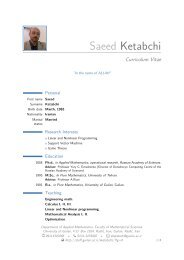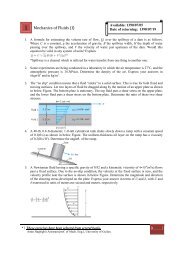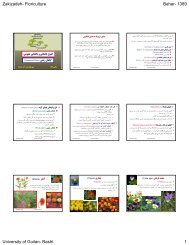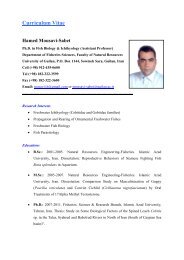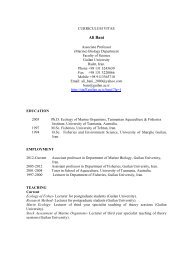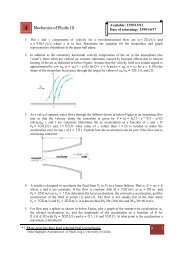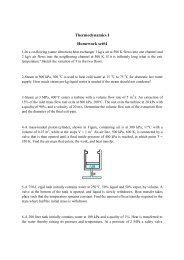Medical Tourism in Developing Countries
Medical Tourism in Developing Countries
Medical Tourism in Developing Countries
- No tags were found...
Create successful ePaper yourself
Turn your PDF publications into a flip-book with our unique Google optimized e-Paper software.
Introduction to <strong>Medical</strong> <strong>Tourism</strong> ● 7expla<strong>in</strong> the benefits for those host<strong>in</strong>g countries. In other words, what’s <strong>in</strong>it for the dest<strong>in</strong>ation countries that offer up their health-care facilities toforeigners? The answer: economic growth. <strong>Medical</strong> tourism is first andforemost related to economic growth. Not only does it br<strong>in</strong>g <strong>in</strong> foreigncurrency but it also has l<strong>in</strong>kages throughout both the health and the tourism<strong>in</strong>dustries. By way of the multiplier, medical tourism spills <strong>in</strong>to secondaryand tertiary sectors, produc<strong>in</strong>g cyclical waves of expansion.However, <strong>in</strong> develop<strong>in</strong>g countries, medical tourism, characterized byhigh-tech equipment and state-of-the-art methods, coexists side by sidewith malaria, acquired immunodeficiency syndrome (AIDS), dengue fever,and river bl<strong>in</strong>dness. More often than not, <strong>in</strong> develop<strong>in</strong>g countries wheremedical tourism flourishes, basic health care for rural populations and theurban poor is rudimentary. A dual medical system has emerged <strong>in</strong> whichspecialization <strong>in</strong> cardiology, ophthalmology, and plastic surgery serves theforeign and wealthy domestic patients while the local populations lackbasics such as sanitation, clean water, and regular deworm<strong>in</strong>g. In otherwords, sophisticated techniques for bypass surgery coexist with widespreadshortages of aspir<strong>in</strong>. How can this dichotomy susta<strong>in</strong> itself? Won’t the lackof basic health care and the result<strong>in</strong>g low life expectancy, low productivity,and low human capital formation cancel out the economic benefits of medicaltourism?Poor health is among the biggest problems <strong>in</strong> develop<strong>in</strong>g countries,while medical tourism could be one of the solutions. Poor health is detrimentalto economic growth, while medical tourism contributes to economicgrowth. Thus, health care is at once both the problem and the solution. Itis through the redistributive functions of macroeconomic policy that medicaltourism can contribute to the solution of health problems <strong>in</strong> develop<strong>in</strong>gcountries. Indeed, medical tourism can be taxed for the benefit of primaryhealth care that reaches the poor and the needy. Public policy can redirect<strong>in</strong>come from hospitals cater<strong>in</strong>g to foreign patients to facilities cater<strong>in</strong>g tothe local population. Thus, it is argued <strong>in</strong> this book that medical tourismcan lead to improved public health. In other words, medical tourism forpay<strong>in</strong>g foreign patients can exist side by side with improvements <strong>in</strong> basichealth care. It is not an either/or proposition, but rather, both are possibleand, <strong>in</strong> fact, may even re<strong>in</strong>force each other.About This BookIt has been said that medical tourism is so new it can’t even be measured. 46Yet, because of its phenomenal potential, it deserves the attention of scholars,policy makers, <strong>in</strong>vestors, and the media; because of its rapid expansion,






